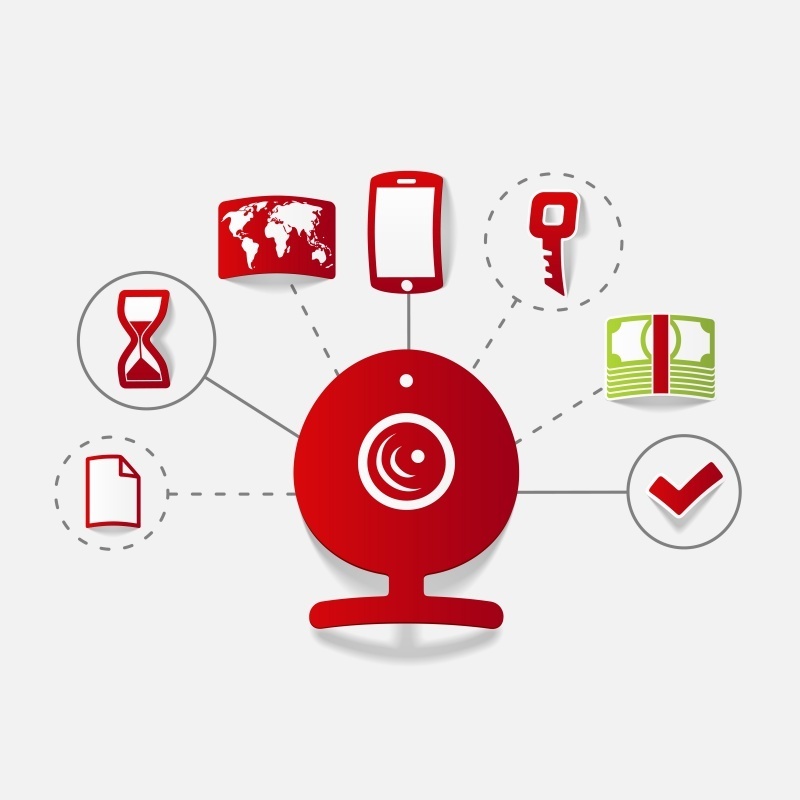How Video Chat Enhances The Online Learning Experience
Since the advent of Voice Over Internet Protocol (VOIP) and Skype, video chat has been used to help us keep up with our faraway relatives and friends, and for those who travel for business or work from home, for business conference calls. As the medium becomes ever more popular, numerous copycat programs—think Messenger, Facetime, and Google Hangouts—have sprung up, each with its own particular charms. No matter which program you choose, however, you may want to consider how video chat enhances the online learning experience, yours or perhaps that of your child.
No one much thought about the potential of video chat as an aid to learning sessions until it simply happened. Body language made a difference to make eye contact. It made a difference to see a partner's facial expressions and body language. You could know when the student really didn't understand and needed further explanation. You could see when a student was bored to tears. From that point on, all the tutors and mentors followed suit whenever possible.
Using Skype for those sessions opened a conversation with the administrators of the program that became an exploration of how best to utilize video chat for learning. Over time, several ideas emerged suggesting video chat was more agile a tool for learning than any of the program administrators had suspected. Here are 10 concepts that came out of this ongoing brainstorming session:
1. Video Chat Eases Communication With Teens
Teens can feel uncomfortable when speaking with adults. It helps if you take the spotlight off them by not making eye contact. It may seem counterintuitive not to use the video function of a video chat, which is meant to be one of the benefits of the medium. But for an insecure teen, turning off the video may make a world of difference in connecting with and imparting knowledge to teens. And it's something you can't do in the classroom!
2. Video Chat Cases Communication With Students On The Autism Spectrum
Gazing into someone's eyes tends to be overwhelming for people who have autism spectrum disorder (ASD). The eye contact can feel like way too much stimulation and may even cause a meltdown. Video, however, is a two-way street. A teacher can watch the student using the video function of the video chat program, while the student can keep the video function switched off. This way the teacher can see in real time how the student is progressing without the student having to make eye contact with the teacher.
3. Video Chat Means The Teaching Talent Pool Is Not Limited By Geography Or Location
Want to hear a lecture from that amazing astronomy teacher in France? Video chat makes that possible and more. You can learn from the world's finest teachers without leaving home.
4. Ill Or Immune-Compromised Students Can Participate In The Classroom From Their Homes
There have been issues of parents not wanting to vaccinate their children, because of other children in their classes who may be vulnerable because of compromised immune systems. Parents may opt to keep their children out of the classroom. But there's no reason they can't be part of the classroom from their homes with video chat. The same is true of students with lengthy or chronic illnesses who cannot make it to school. And it's so important for these students to continue to feel a part of the classroom! Video chat can make it happen.
5. Video Chat Can Create A Feeling Of Unity For Students In Disparate Locations
Imagine a classroom with students from Edinburgh, New York City, and Amsterdam. You don't have to imagine it, because it can happen with video chat. A classroom no longer has to be in one physical location. That means students can learn from and about other cultures and perspectives. In real time.
6. Video Chat Eliminates Most Classroom Distractions
In one to one learning sessions, the student needn't be distracted by the girl to the left chewing on her hair, or the kid behind him, kicking his chair. It's just you and the teacher. No other noises, movements, or weird behaviors. A boon for students who tend to become distracted by such things and lose focus.
7. Video Chat Is Efficient For Quick Follow-Up Questions
You've finished your lesson and you're going over your notes or doing your homework when you realize you're missing a piece of information or there's something you don't quite understand. Video chat makes it easy and quick to get in touch with the teacher to ask your questions.
8. Video Chat Is Free So Can Be Accessed By Most Students
Yes, you need an operating system of some kind to access video chat, and you need an internet connection or data packet in order to use video chat, and those things cost money. Most students today do have access to these things, even students on the lower end of the economic spectrum. That makes video chat an equal opportunity educational aid.
9. A Large Number Of Students Can Have What Amounts To A Private Lesson
We think of private tutoring as an expensive privilege. Video chat makes it possible for a teacher to offer a more intimate classroom experience for many students at once. A violin teacher, for instance, can show students how to hold the bow and the violin close up, even though there are many students attending the class. Contrast this to the student in the back row of the classroom who has to struggle to see the teacher and the board.
10. Video Conferencing Can Be Used To Share A Wider Breadth Of Knowledge And Techniques
You're in a class learning glazing techniques for pottery. You've got famous potters demonstrating their personal techniques from Sweden, China, and California. All during a single video conference session!
Video chat may never replace the traditional classroom. It can, however, be used to enhance the classroom experience. Maybe it's time to realize that Skype is good for more than wishing happy birthday to Aunt Bertha.









